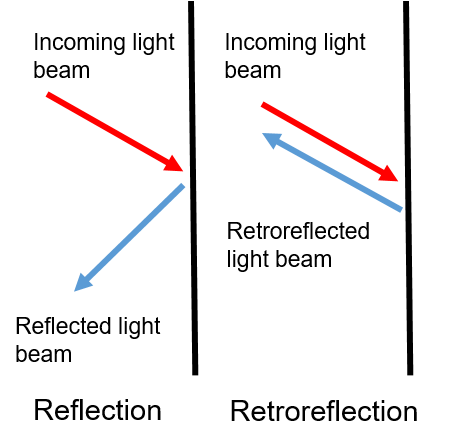Day or night, retroreflective and light-up gear can save pedestrians' and cyclists' lives
Flashing headlamps, retroreflective clothing, and gear with LED lights increase invisibility even when car headlights are used
Photo by Basil Samuel Lade on Unsplash
“Is that driver blind?”
Have you ever had a similar thought after a near-miss with a car on the road at night? Your clothing choices during hours of darkness could majorly affect your visibility to drivers and other road users.
Pedestrian fatalities have increased by 35% in the past twelve years. And a recent report from the National Highway Traffic Safety Administration showed that in 2018, 76% of all pedestrian deaths from vehicle accidents occurred after dark.
According to the Governors Highway Safety Association, some of the ways to alleviate this problem are improving street lighting, reducing speed limits in high pedestrian areas, and enforcing nighttime police patrols. But, there are also precautions that pedestrians themselves can take to increase their safety at night.
Wearing high visibility clothing is one such example.
This can greatly increase the distance at which drivers can see the pedestrians. Longer sight distances give more time and space for a driver to stop safely and avoid a collision. High visibility clothing makes use of "retroreflective" materials, which reflect light back in the same direction in which they originate. Because so much of the light is reflected back to the light source, retroreflective materials appear brighter than regular materials. And brighter means more conspicuous.

Rajaram Bhagavathula
Moreover, wearing retroreflective strips on moving joints of the body like arms, knees, wrists, and ankles has also been shown to greatly increase pedestrian visibility. A study found that participants in a moving vehicle noticed pedestrians who wore retroreflective strips on their arms and legs at distances that were 10 times longer than when the pedestrian was just wearing a retroreflective vest on their chest. This is called biological motion or biomotion. Biomotion uses the innate ability of humans to recognize the movements of other humans by their motion.
One of the drawbacks of relying solely on retroreflective markers is that they only work when they are illuminated by car headlights and other sources of outside light . If the pedestrian wearing the retroreflective clothing is beyond the range of any headlights then there is no light for the retroreflective material to reflect back. But, incorporating LED lights into pedestrians’ clothing can not only overcome the drawback of retroreflection but also increase the pedestrian’s visibility.
A pilot study that I led compared the visibility of bicycle mounted lights and bicyclist worn retroreflective materials on roads during both night and day conditions. In this study participants driving a vehicle on a public road, and the distances at which they were able to detect bicyclists equipped with different kinds of visibility enhancing devices like flashing lights, steady-on lights, and biomotion bands were compared. Flashing head and tail lights were detected from farther away than biomotion bands during both day and night. These results were also found to be true for both older (65+ years) and younger (18 to 35 years) drivers.
“[Flashing lights and retroreflective clothing are] vital for situations like turning vehicle and t-intersections where vehicle headlights are not aimed toward the pedestrians," says Dr. Ron Gibbons, Director for Center for Infrastructure-Based Safety Systems at Virginia Tech Transportation Institute. He added, “The additional attention-grabbing nature of a flashing light draws the attention of a driver to the cyclist or pedestrian even when roadway lighting is present.”
.jpg)
A group of cyclists in retroreflective clothing
Although wearing lights or reflective clothing is clearly beneficial, it also causes a problem: pedestrians tend to overestimate their visibility. Research has also shown that pedestrians substantially –and, dangerously – underestimate the benefit of high visibility clothing.
Educating pedestrians about their overestimation of their visibility showed promising results. For example, participants who received an intensive 90 minute lecture with photos and videos illustrating the dangers of the road at night and how retroreflective and biomotion clothing can increase pedestrian conspicuousness had lower estimates of their own visibility than participants who did not receive that information by 56%.
To reduce pedestrian fatalities, it is important for pedestrians to make themselves more conspicuous by using every tool available. These days the market is flooded with LED-based lights and retroreflective clothing (like biomotion bands) for runners, joggers, and walkers for under $30. Dr. Alan Lewis, an Adjunct Professor of Physiological Optics at the New England College of Optometry says, “It is no longer an issue of whether to have them (lighting and retroreflective clothing) or not, it is absolutely essential to have both lighting and retroreflective clothing on. It makes a big difference."
You may feel uncomfortably conspicuous, like a lit up Christmas tree, when wearing a combination of flashing lights and retroreflective markings. But being conspicuous is far better than being a fatality statistic.